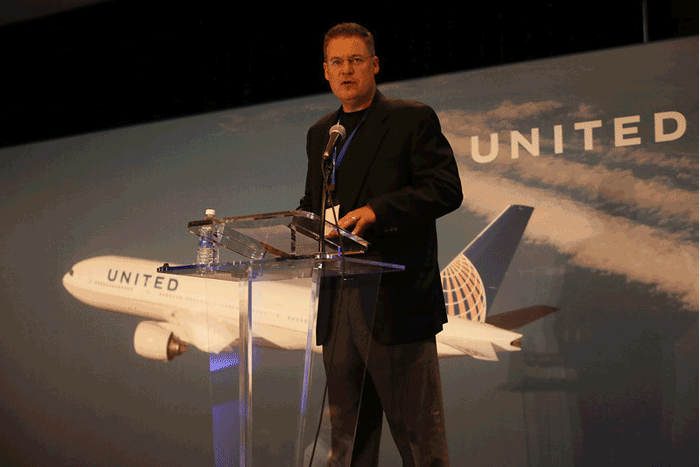| 

Richard Malkin at The Reichstag Berlin, 1948. Malkin’s
coverage of The Berlin Airlift (1948-49) invented modern air cargo journalism.
Here he returns at 100+ years of age to continue his landmark reporting
exclusively in FlyingTypers.
 ir
cargo journalism was a career that I neither planned nor anticipated.
In fact, it did not exist as a specific profession before I gave up my
job as a reporter for a daily newspaper to assume the editorship of what
billed itself as the world’s first dedicated air cargo periodical.
This occurred a couple of years before the dawn of the so-called Air Cargo
Age in domestic and international commerce at the end of World War II. ir
cargo journalism was a career that I neither planned nor anticipated.
In fact, it did not exist as a specific profession before I gave up my
job as a reporter for a daily newspaper to assume the editorship of what
billed itself as the world’s first dedicated air cargo periodical.
This occurred a couple of years before the dawn of the so-called Air Cargo
Age in domestic and international commerce at the end of World War II.
The plain truth is that my passage from
newspaper to magazine activity was purely an economic decision: I harbored
no interest in aviation or transportation. Privately, I intended to hold
on to the job for several years, get onto firmer economic ground, then
shift to a more desirable editorial environment.
As it turned out, I lasted 66 years writing
about all manner of property moved by air.
Without realizing it, I had been seized
and held captive in the powerful grip of diverse dynamic forces in motion,
not least the spectacle of the horde of Air Transport Command and Naval
Air Transport service veterans, many of them with overblown visions of
their roles in this new business called air cargo—a reminder, as
a wise man once pointed out, an exaggeration is a truth that has lost
its way. But more about the Air Force hopefuls later in this article.
At the time of the new industry’s
beginning—and even before then—the absolute definition of
air cargo embraced all forms of property. Not only did it cover express
and freight, but mail and baggage as well.
Dealing with
the monthly traffic statistics received from the airlines, savvy editors
soon learned to verify the actual tonnage of shipments carried. Adding
to the statistical confusion, foreign operators tended to report the results
in kilos in contrast to pounds or tons reported by the U.S. airlines.
A Civil Aeronautics Board held tight rein on a new industry it was learning
to understand.
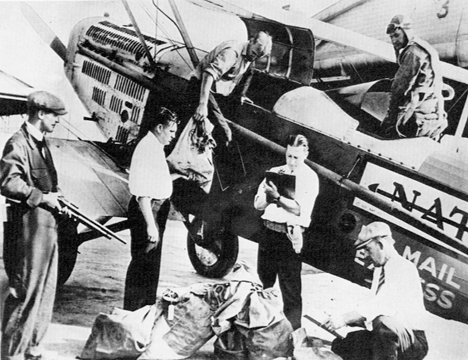 Despite, as previously indicated, the birth of the Air Cargo Age at the
end of hostilities in 1945, scheduled air shipping in the U.S. had been
in existence since 1927 when a single-engine aircraft of National Air
Transport flew a load of small packages and boxes from New Brunswick,
New Jersey to Chicago. This was the origin of REA Air Express. A creature
of Railway Express Agency (owned by 80 railroads which enjoyed a lucrative
contract with the nation’s scheduled airlines until international
competitive reverses decades later spelled the agency’s end. An
ambitious newcomer with a service strategy all its own, popped into existence.
Despite, as previously indicated, the birth of the Air Cargo Age at the
end of hostilities in 1945, scheduled air shipping in the U.S. had been
in existence since 1927 when a single-engine aircraft of National Air
Transport flew a load of small packages and boxes from New Brunswick,
New Jersey to Chicago. This was the origin of REA Air Express. A creature
of Railway Express Agency (owned by 80 railroads which enjoyed a lucrative
contract with the nation’s scheduled airlines until international
competitive reverses decades later spelled the agency’s end. An
ambitious newcomer with a service strategy all its own, popped into existence.
Nor was air freight—bulk consignments—totally
absent in the pre-Air Cargo Age years. Pan Am flew occasional planeloads
of 24-hour baby chicks to Latin American destinations, and there were
notable freight movements by TACA and Avianca, and, yes, the Canadian
bush 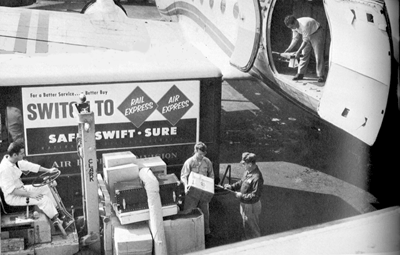 flyers,
but these were too few to signal an explosion of freight revenue for the
airlines. flyers,
but these were too few to signal an explosion of freight revenue for the
airlines.
From a running start in the second half
of the 1940s, significant examples registered what the new industry would
look like in the future. Hauled in aircraft that were pale shadows of
today’s giant jets, the world’s important airlines gave evidence
of starting hard- freight operations. Consider, for example, a zoo-bound
planeload of assorted animals, including a baby elephant. Or an entire
household flown thousands of miles to an overseas inland location. Or
the substitution of the speed of air cargo for refrigerated ground or
sea transport of perishable commodities. To borrow a biblical expression,
the fledgling industry went annually from strength to strength.
Like the history of the surface transportation
companies, the appearance of the middleman inspired little affection in
airline ranks. The IATA-approved commission-earning cargo agent preceded
by years the cargo-consolidating air freight forwarder.
The rise of the cargo agents was swift
and dramatic. They descended in large numbers on export communities on
both coasts and the Midwest. Typical of the swarm of newly IATA-authorized
cargo agents was the avid chap armed with a desk, a phone and a stack
of air waybills. Facing traditional shippers asked to pay rates sharply
higher than they were accustomed to pay, the cargo agents turned patient
and persistent educators, setting forth the inherent economic advantages
produced by the speed of air transport. It was no easy sell, and often—too
often—price was king, even under demonstrated proof that air freight’s
bottom line should be preferable. Those were the days when physical distribution
executives were as rare as kiwis in Yellowstone Park.
As the volume of agent-derived traffic
increased at a steady pace, a few international air carriers questioned
internally whether it was smart to become dependent on the agent for what
may turn out to be an interesting potential.
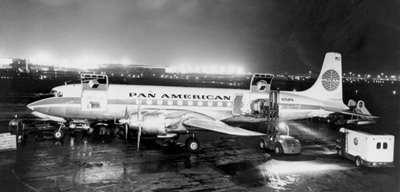 A leak at Pan Am disclosed that a key executive, concerned that the cargo
agents might achieve control of the airline’s growing freight business
had proposed to open direct competition against them if their input reached
a threshold of 20% of Pan Am freight revenue. The leaked news produced
an instant emergency meeting of agents in a Manhattan restaurant, and
after emotional debate voted to make Pan Am the carrier of last resort.
Pan Am reacted quickly. At a hastily arranged meeting with an agents committee,
it pooh-poohed the veracity of the leak and offered calming words of support.
Out of that session came a period of mutually guarded accord.
A leak at Pan Am disclosed that a key executive, concerned that the cargo
agents might achieve control of the airline’s growing freight business
had proposed to open direct competition against them if their input reached
a threshold of 20% of Pan Am freight revenue. The leaked news produced
an instant emergency meeting of agents in a Manhattan restaurant, and
after emotional debate voted to make Pan Am the carrier of last resort.
Pan Am reacted quickly. At a hastily arranged meeting with an agents committee,
it pooh-poohed the veracity of the leak and offered calming words of support.
Out of that session came a period of mutually guarded accord.
Forwarder consolidations of high-rated
small shipments incited no yelps of glee from the airlines. They were
largely regarded by the carriers as competitors. The airlines’ darling
of the latter Forties was Emery Air Freight whose pricing in its startup
year—it refrained from competing with domestic airline rates unlike
the other intermediaries—it sold and delivered top-quality service
before the iron realities of the marketplace compelled it to offer competitive
rates.
As an air cargo innocent, virgin territory
each workday was an experience in discovery, often familiar but in a totally
different context. It was both fascinating and challenging. The determined
forces of a pulsing creative bent, of steady focus of expectation in a
still blurry tomorrow.
Not very long after the return of peace,
I found myself tramping California’s strawberry and lettuce fields,
and covering stretches of Florida and Texas flower growers. I watched
the careful offloading of Jamaica lilies for the Easter market. A bit
later I flew to the Netherlands for an eye-opening visit at the fabulous
flower auction in Aalsmeer. It did not take genius thinking to understand
why these perishable products were among the first natural candidates
to take to the air. This led to my discovery that varieties of fish had
donned wings. Interesting to note is that the Air Cargo Age was only three
years old when Lockheed engineers participated in tests of the effects
of altitude and changes of pressures on 34 different types of fruits and
vegetables.
I can conceive of no better descriptive
word than “wonderland” for those pristine years. Close witness
to extraordinary feats of freight flying, I was reminded that all fine
things descend from originality; for the first time restaurants in interior
cities received fresh fish from Eastern waters . . . A ship’s propeller
weighing 6 1/2 tons, too long for normal loading, slung on specially constructed
beams beneath the fuselage; an overseas tramp operator picks up and delivers
random shipments to a series of airports on a circuitous route.
Yes, all the above—and more!—when
commercial air cargo was still in diapers.
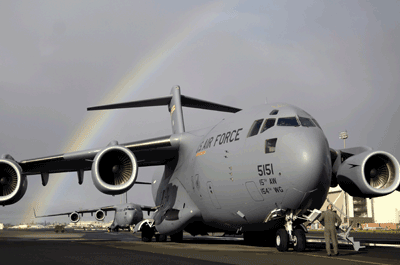 In a published work some years ago I noted an incident involving an ATC
veteran who paid a visit to my office about a year after the war. In a
broad display of unsophisticated candor he charmingly informed me that
he had acquired a war-surplus C-47 cargoplane, and could I tell him how
to go about getting into the airline business.
In a published work some years ago I noted an incident involving an ATC
veteran who paid a visit to my office about a year after the war. In a
broad display of unsophisticated candor he charmingly informed me that
he had acquired a war-surplus C-47 cargoplane, and could I tell him how
to go about getting into the airline business.
I mention this because he was typical of
scores of ex-service flyers and handlers whose postwar ambitions pointed
in the same direction. The immediate postwar era showed explosive growth
of what now were often called “GI airlines”—all nonscheduled
airlines, many of these new air carrier companies built on the strength
of a single war-surplus transport. Rise and fall—it took a few short
years, victims of the tough realities in marketing, pricing and, of course,
competition.
But a few hardier ones survived, a small
number longer than the rest. Among these escapees from nonscheduled to
become scheduled carriers. This small group included such familiar brands
as Flying Tiger, Slick, Seaboard, etc, now fading memories.
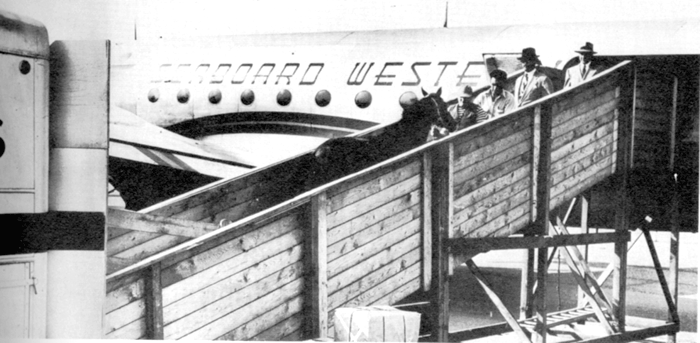
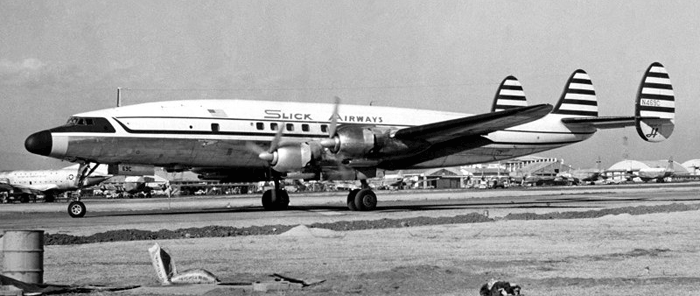
|
In spite of their record during the first
few years, they are generally credited for a significant contribution
to awareness of the plane as a true component of modern distribution.
Having passed through the entire life of
the air cargo industry to date, I found myself effortlessly settling on
the earliest years—the years when imaginations and hopes ran riot—as,
for me, a spell of utter romance. (What was inevitably to follow was a
parabola of mammoth jetfreighters, automated cargo handling, containerization,
brilliant applications of modern technology, fierce competition on a global
scale.)
Passenger-oriented from the very start,
the scheduled airlines’ development of revenue from the carriage
of cargo above REA’s contributions was at low ebb. There was a certain
charismatic glow bathing sales people who often rubbed elbows with celebrity
passengers. A man assigned to cargo was likely said to have been exiled
to Siberia. (A former top executive at Lufthansa admitted to me that in
his youth at the German airline, cargo was referred to as a fifth wheel.)
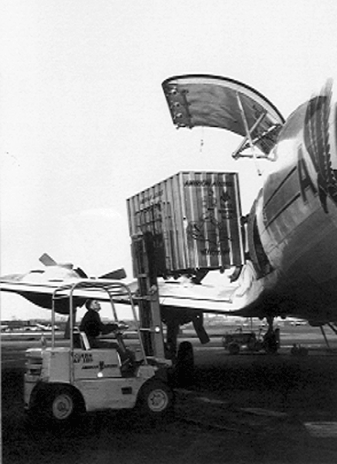 Gradually, but with increasing frequency, bulk shipments moved into the
air. American Airlines anticipated what lay ahead and was the first to
offer scheduled all-cargo service. Its inaugural freighter flight flew
from New York to Burbank, including several intermediate stops.
Gradually, but with increasing frequency, bulk shipments moved into the
air. American Airlines anticipated what lay ahead and was the first to
offer scheduled all-cargo service. Its inaugural freighter flight flew
from New York to Burbank, including several intermediate stops.
As sure as the daily rise of the sun, there
came the crop of unabashed prognosticators to spread the good word. There
was a happy aura of certainty that surrounded their expressions. One by
one, airline and forwarder executives donned the seer’s mantle and
seriously issued predictions that airline cargo revenue would pull abreast
passenger revenue in—depending on the predictor’s gift of
prophecy—10 to 15 years. Ralph S. Damon, then president of TWA,
proved to be more conservative! He maintained that it would take about
25 years. The ensuing decades proved that Pliny the Elder had it right:
the only certainty is that nothing is certain.
This article of memory-wresting details
is essentially devoted to the postwar Forties with one or two brief forays
beyond. It is meant to focus on elements—at least some basic ones—that
formed the arc that was dubbed the Air Cargo Age.
On a path that was to lead to an ultimate
global aerial network fat with the goods of man, there were trial and
error, success and disappointments, visionaries and naysayers. All things
considered, I am inclined to say that the first few years of my six-and-a-half
decade career in air cargo were crammed with the stuff of pure romance.
The industry’s green years had, as
shown, its crop of dreamers and those comfortably wrapped in tradition.
The dreamers stretched the bounds of possibility. Along with their dreams
of global airfreighter fleets were predictions of complementary services
by airships, helifreighters, and parachuted deliveries. Is dreaming an
exercise in futility? There is an old French suggestion—Tous
songes sont mensonges (all dreams are lies).
Don’t you believe it.
Richard Malkin
malkin101@aircargonews.com
|
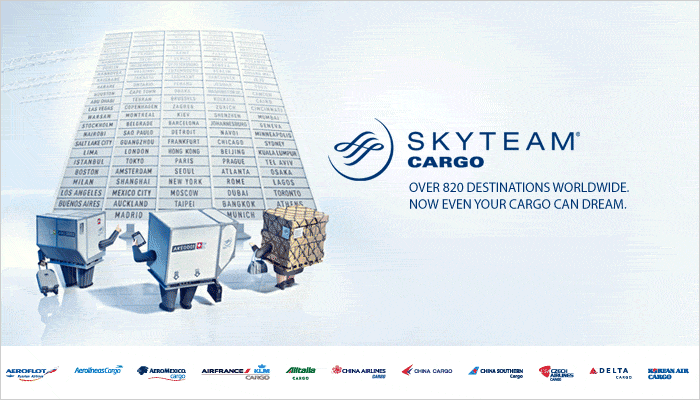

 Gradually, but with increasing frequency, bulk shipments moved into the
air. American Airlines anticipated what lay ahead and was the first to
offer scheduled all-cargo service. Its inaugural freighter flight flew
from New York to Burbank, including several intermediate stops.
Gradually, but with increasing frequency, bulk shipments moved into the
air. American Airlines anticipated what lay ahead and was the first to
offer scheduled all-cargo service. Its inaugural freighter flight flew
from New York to Burbank, including several intermediate stops.

